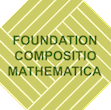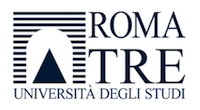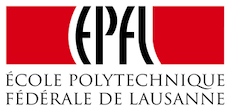Schedule
Abstracts
Analytic methods in complex algebraic geometry: two applicationsSince the seminal work of Kodaira, analytic methods in complex algebraic geometry have played a very important role. Two of the main tools in this kind of business are surely Hörmander-Andreotti-Vesentini’s theory of L2 estimates for the d-bar equation and complex Monge-Ampère equations. These tools have led to spectacular results, such as the Nadel-Kawamata-Viehweg vanishing theorem, the Ohsawa-Takegoshi L2 extension theorem, Siu’s invariance of plurigenera, the resolution of the Calabi conjecture, just to cite a few. In this talk we shall overview the basic material concerning these techniques and then give two recent applications in complex algebraic geometry. More precisely, we show that (projective) manifolds having either negative holomorphic sectional curvature or an étale cover carrying a bounded strictly plurisubharmonic function are of general type, together with all of their subvarieties (smooth or not). Curves on K3 surfacesThe theme of curves on K3 surfaces is very wide and comprises at least three topics: A smooth projective scheme X \subset \bP^r of dimension n is k-extendable if there exists an irreducible scheme Y \subset \bP^(k+r) of dimension n+k which is not a cone, such that X=Y \cap \bP^r. Schemes which are k-extendable have a non-surjective Gaussian map and a natural problem is to characterise k-extendable schemes. In recent years some fundamental progress has been realised in the case in which X is a canonically embedded curve which is sufficiently and explicitely general. This is related with the geometry of (true or fake) K3 surfaces and with (true or fake) Fano varieties. The scope of this talk is to describe the problem and the state of the art on the subject and to propose problems for future research. Deformation Theory and Moduli SpacesIn this talk we will explain how deformation theory play a central role in understanding geometry of moduli spaces, focusing on some explicit examples. We then explain how to define invariants from the moduli spaces and recap recent results and open problems in this research area. Hyperkähler ManifoldsHyperkähler manifolds can be seen as higher dimensional generalisation of K3 surfaces, with which they share several important properties. By a theorem of Beauville-Bogomolov they are the building blocks of all compact complex kähler manifolds with zero first Chern class. In the talk we will introduce Hyperkähler manifolds and explain their basic properties. Particular attention will be given to lattice theory, as this is an important tool when studying Hyperkähler manifolds. We will focus then on two active research topics: the geometry of special Hyperkähler manifolds and the study of their automorphisms group. Universal compactifications for bundles over curvesPrincipal bundles and, more specifically, vector bundles on curves have been extensively studied in connection to problems in the classification of curves. The study of their moduli is more recent, but has attracted as well the attention of many people, from mathematicians to physicists. Compactifications of moduli, the so-called universal compactifications, appeared first in works by Caporaso and Pandharipande in the early 90’s. We will present the various universal compactifications in the literature, comparing them. We will start by discussing the rank one case, which is more developed, then move on to higher rank and finally to principal bundles. We will present open problems and briefly talk about our recent work in the area. |
Aeneas Conference: Migrating Algebraic Geometry
Christmas Conference: 20th and 21th of December 2018, Roma Tre
 |
 |
 |
 |